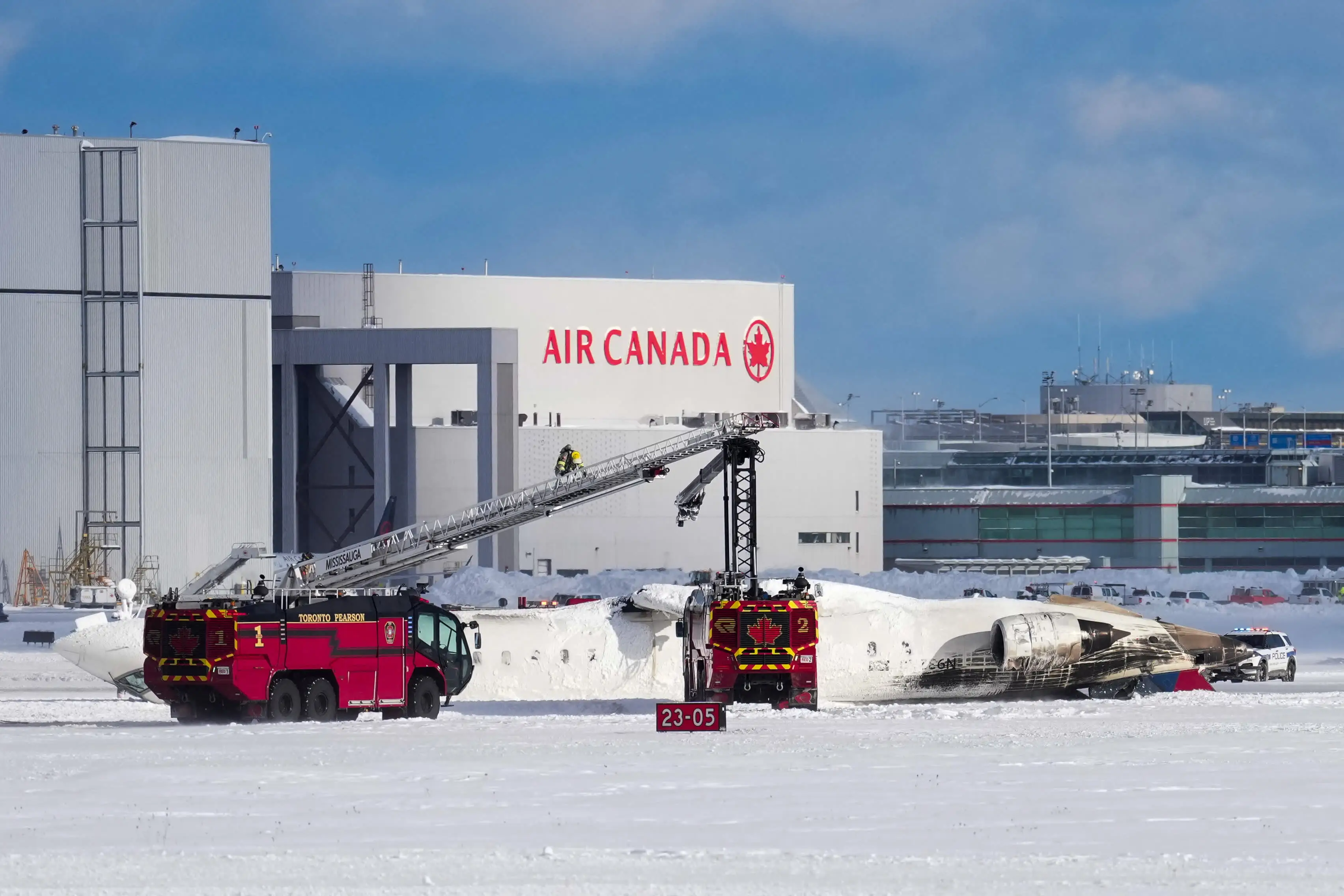Toronto Airport incident: Delta Airlines aircraft Dagging during landing
Author's blog Navitraicon
Introduction
Morning on February 17, 2025 began at Toronto International Airport, like any other weekday: flights ran in the sky, dispatchers coordinated landings, and the terminals were filled with people hurrying to their gates. But by the middle of the day, the situation changed - reports of the incident began to spread at anxious speed. One of the passenger aircraft operating a flight from Minneapolis, Turned over when landing .
This event instantly attracted the attention of the public, press and aviation experts. After all, it was not about technical delay or turbulence - the plane literally ended up on the roof, and its passengers survived the minutes that would forever remain in their memory.
Blog Navitraicon It represents a detailed analysis of this incident, its circumstances, the first reactions, as well as the thought that this incident means for future aviation security.
The main part
Aircraft and route
On the ill -fated day Flight Delta Airlines DL7465 He flew out of the Minneapolis International Airport in the Toronto direction. On board was a plane of the Bombardier CRJ 900LR model - a reliable Canadian machine designed for regional flights. On board were 76 passengers and 4 crew members.
The flight took place regularly. No emergency situations were recorded in the air. The crew regularly reported on the position of the aircraft, and up to the moment of landing, the flight was on the schedule.
The moment of landing
Landing was planned at one of the central stripes of Lester B. Pieron's airport. The weather conditions at that moment were far from ideal: visibility was reduced due to drizzle, lateral wind, light ice on the runway.
Immediately after touching the chassis, the strip occurred Unforeseen deviation from the course . According to eyewitnesses and preliminary data, the aircraft lost controllability, began to roll sharply and literally after a few seconds The chassis turned upside down . Visual damage was serious: wing deformation, fuselage damage, engine breakdown and fuel leak.
Emergency systems worked, and thanks to the professionalism of the crew and the quick reaction of rescuers, it was organized Timely evacuation .
Victims and consequences
In total, the incident suffered 18 people , three of them - with serious, but not threatening injuries. Most received bruises, stretching, cuts from glass fragments or interior damage.
The psychological state of passengers has also become a subject of special attention. Some of them later required support for specialists - not every day a person finds himself in a situation where the plane in which he flies is on the roof.
Immediately after the accident, all arrivals and departures from the airport were suspended for several hours. This caused Chain reaction of delays , affecting dozens of flights. Many passengers were forced to wait for transplants or change plans, despite the official resumption of the airport’s work in the evening.

The reaction of the authorities and the aviation community
The first comments from representatives of the airport and airline appeared a couple of hours after the incident. The assurances were given that all the necessary assistance is provided to passengers, and the causes of the incident will be studied in detail.
The head of Ontario and the mayor of Toronto expressed gratitude to the emergency response services for the operational and well -coordinated work. Against the background of these statements, the phase began actively preliminary investigation: “Black boxes” were seized, a check of technical documentation, analysis of flatulents and conversations with the crew began.
Aviation experts expressed various assumptions: from a sudden shift of wind (Wind Shear) to failure of stabilization or inhibition systems. The human factor was also considered - although the preliminary assessment indicated the professional actions of pilots even in conditions of stress.
Technical aspect and possible reasons
Although the official conclusion has not yet been made public at the time of publication, it is known that accidents of this kind are usually caused a set of factors , not one mistake.
Among the possible reasons under consideration:
- Slippery take-off and landing strip
- Incorrect calculations when going to land
- Disruption of the brake system or clicks
- Error when compensating the side wind
The state of the aircraft before departure, like the experience of the crew, has not yet aroused suspicion. It is expected that the full investigation will last several months, and only after the completion of all examinations can it be said exactly what caused such a rare and dramatic incident.
Conclusion
The incident with the coup delta Airlines at the Toronto Airport was a reminder of how fragile the seeming route routine can be. And although aviation remains the safest mode of transport, each such situation requires a deep analysis and conclusions to minimize the risks in the future.
The main thing in this story is that All passengers survived , and the victims are provided for the necessary assistance. This is the merit of both the crew and emergency services that worked in harmoniously and professionally.
For the aviation community, such incidents become Growth points . They force them to revise protocols, improve training, improve equipment and increase the stability of systems. And for passengers, this is a reminder of the importance of trust in specialists and understanding that even in emergency situations, modern aviation knows how to save lives.
Blog Navitraicon It will continue to monitor the development of this investigation and share with readers an important, proven information from the world of aviation. Because security begins with knowledge, and trust - with transparency.
